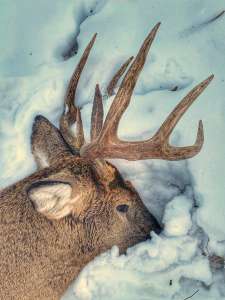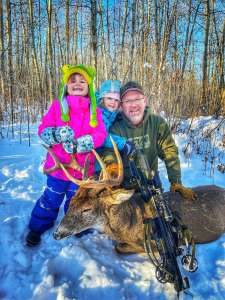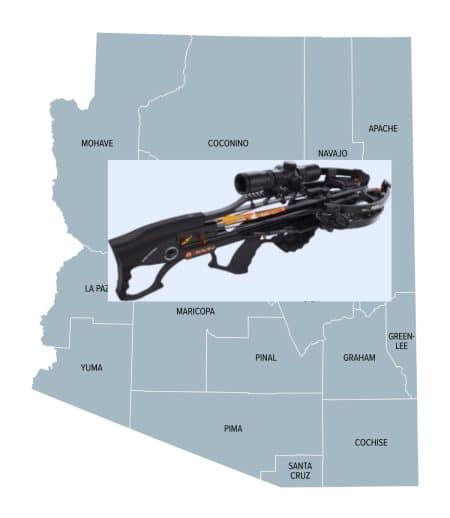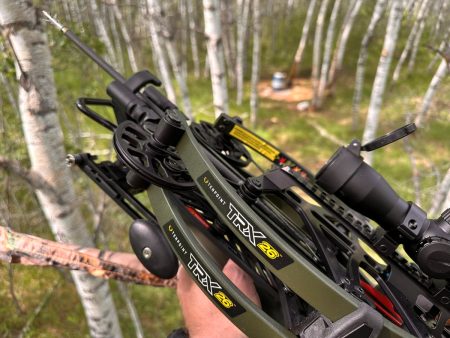The first time I caught sight of this buck, it appeared to have something wrong. Its body was oversized and bulky, and it looked like a weightlifter with rippling, overgrown muscles. Its antlers were tall and mature, sporting four points on each side. I dubbed him “The Big Eight.” That buck immediately went on the fall hit list.
Big, old bucks seldom cooperate, making it seem like one strange year in the deer woods. Like most deer hunters, I had lots of excuses: Warm temperatures, drought conditions, poor feed, deer staying in heavy cover as challenges.
I am fortunate to live where I can hunt moose annually. The early archery seasons allow me to wander the trails and check my trail cameras regularly. During moose calling season, I took an inventory of the deer sign. The turning point was a heavy snowfall on November 2 that allowed tracks and trails to sort things out. Within a few days, and after lots of deer movement, it was easy to tell where stands needed to be placed.
Scrapes Everywhere

Another interesting point was that the scrapes were all active and had activity daily. Regular dustings of fresh snow did not deter the bucks, and the abundant scrapes were kept clean and active. I watched for big tracks and was not disappointed. The Big Eight had a wide track, and his body weight left an impression wherever he stepped.
It was the magical time of year when deer could show up at any time of the day, and I made plans to spend as much time as possible in the stand. However, when I made several trips away in early November, I ended up with gaps in information sequences. The big deer was always in the back of my mind; having some days without any hunting pressure might have helped me.
When I did return, the deer were running crazy. I found that watching the moon phase and predicting movement periods for wildlife can be highly accurate. I kept track of the minor and major game movement periods based on moon phases, with prime time meaning I’d head out to the field. I put the HuntStand app to good use in November and watched the changing moon. That has been a great way to predict deer movement during daylight hours.
Frequent Sightings
Deer sightings were regular enough on these days to keep a person on their toes all day. Does and fawns continually showed up and always seemed to be looking over their shoulders. Most appeared annoyed by the relentless buck activity and continual chasing. One deer would draw more deer, and so on. There was a high number of young bucks this time out, and they seemed to amp up the excitement and energy for all the deer. It added a level of enjoyment to the hunt and added to my enthusiasm to get out as much as possible.
The younger bucks seemed to be most active and often ran circles during the day. Even the buck fawns were acting aggressively and kicking up their heels as other bucks came around. There was a definite pecking order, and it was not hard to determine which deer would be dominant in years to come.
Some bucks, like The Big Eight, had been seen for several years and were starting to blossom, while others appeared just the same. With heat and drought, it is hard to understand how the big four-by-four had grown considerably in mass and length over the last couple of years. Everything about this buck had changed, including its body size and hefty belly. The old boy looked like the king of the hill. I hoped to catch him moving given all the rut activity.
On this particular day (one that was predicted to be one of the strongest for rut activity and daytime movement), I bristled with excitement as I headed for the woods. When heading down the trail for my stand (which sits against a ridge overlooking the confluence of three trails), it was impossible to miss the activity at the scrapes. Scrape lines circled the area and deer approached from all angles.
Sitting in my ladder stand, I saw two does and a fawn trotting down a trail and ducking into dense willows. A young buck showed up shortly after that with his nose to the ground, following the trio like a bloodhound. That’s when the frenzy of activity started. The does ran back up the trail with the buck in hot pursuit. Another buck joined the fun a minute later, and deer were scattered everywhere. Grunts, bleats, and stomping hooves were heard in stereo, creating a circumstance that was an excellent way of drawing more deer. One doe, in particular, was the focus of attention; the other one was trying to stay out of the way. The bucks were all aggressive, and the does were acting rather randy. It is difficult to discern in these situations if the does like the chase as much as the bucks do, or if the does are just trying to escape.
Spotting Eight
The deer were back and forth several times when a new buck showed up with antler mass that stood out. It was the big eight-point. The deer looked bigger on the hoof than in the pictures, and my nerves started to rattle. This buck looked and acted dominant. The smaller bucks raced to stay out of his way. I had my TenPoint Nitro 505 crossbow tucked into my shoulder as the deer ambled on the trails. There were too many eyes to start ranging, so I concentrated on the doe to know where the buck would head next. All that deer activity had created such a ruckus that it drew the attention of the big boy.
Getting The Shot
The hot doe was acting erratically, and it headed to my right, with the buck behind her. I found the buck’s vitals with the crosshairs. As he paused his advance, I slowly squeezed the trigger on my TenPoint Nitro 505. The arrow and broadhead made a sound indicating a solid hit. The buck paused momentarily before retreating under my stand and over the ridge behind me.
While this closeup view was appreciated, it wasn’t what I wanted to see. My arrow had hit the deer farther back in its body than I wanted or anticipated. I waited 20 minutes to let my nerves settle before climbing down and retreating down the trail. I felt sick. I had no idea why the arrow wasn’t in the vitals. The deer wasn’t moving when I shot, and it had been standing broadside. There were no apparent limbs or twigs in the way. The shot felt great, but the arrow did not go where intended.
The first thing I did when out of the woods was look up how much time to give a deer arrowed too far back. Everything that I read and already recognized said the period was six to 12 hours. Pacing for hours did not help; the buck consumed my thoughts, and I could not focus on anything else. I took a deep breath and told myself that the deer would be recovered. Most hunters want a clean kill, and they want to know that an animal will not suffer.
Locating the Buck

Like any mature Whitetail, this buck headed into the nastiest tangle of willow and alder it could find. The warm weather made for quiet stalking, but it was still one step at a time, watching and listening ahead. The sun started to set when rustling branches made me freeze in my tracks. The buck had gotten up less than 20 yards away from me, and it was struggling to make advances. I immediately decided to back out and leave the deer overnight, hoping the local coyotes would not find him.
Knotted Gut
The knot in my gut was even more prominent in the morning when I waited for good light and then struck out to pick up the trail. It didn’t take long to find the bed the buck was rousted from, and where I found the two pieces of my arrow. Standing where the buck was last seen, I picked up the trail. Stalking carefully with each step, I didn’t get 100 yards before spotting brown fur.
Standing there for over a minute, I watched for any movement, but it was apparent that the deer was dead. My binoculars worked the deer over, and there was no sign of movement or life. The relief was overwhelming, and I took a minute to appreciate the circumstances. I still don’t know what went wrong with the shot or if the deer moved the exact second as I pulled the trigger, but I hope it never happens again.
It was a morning of good fortune. The buck was located intact, and the coyotes hadn’t eaten it. The cold night helped save the meat, which had cooled overnight. I was a long way from a trail, so I field-dressed the buck and went to get the side-by-side for retrieval. The sun was shining, and the snow was starting to melt, so I packed up my wife Stef and our twin girls to help and give thanks for a positive outcome to my adventure. We got as close as possible to where I had dragged the deer and went in to take pictures and complete the recovery.

There was still lots of work ahead but having a cheerful crew to giggle and laugh with during the tasks helped generate a better mood around the situation. The girls grabbed antlers and grunted and groaned while trying to move the big-bodied deer, but the buck never budged.
Once it was loaded into the side-by-side box, we headed home. It had been an exciting season, with plenty of opportunities to learn more about deer and watch them interact. I am grateful that the hunt ended with a recovered animal and a positive outcome. If I had pushed the buck sooner or harder, there is little doubt that the deer would not have been located as easily. It can be challenging to have the patience to wait a whole day after shooting a deer, but it paid off in my circumstances.
Per our affiliate disclosure, we may earn revenue from the products available on this page. To learn more about how we test gear, click here.







